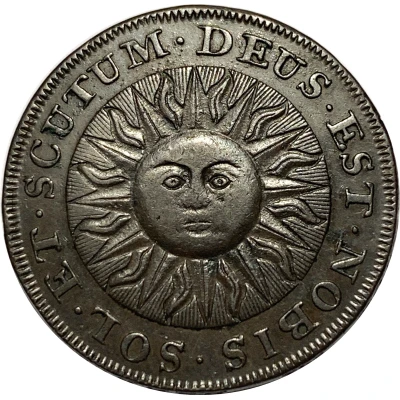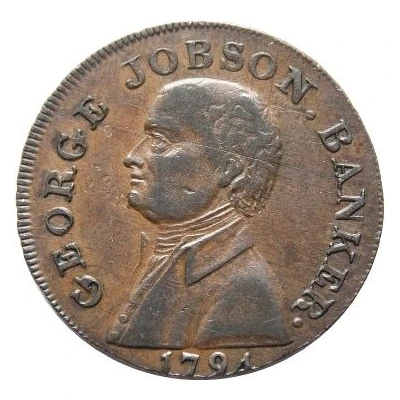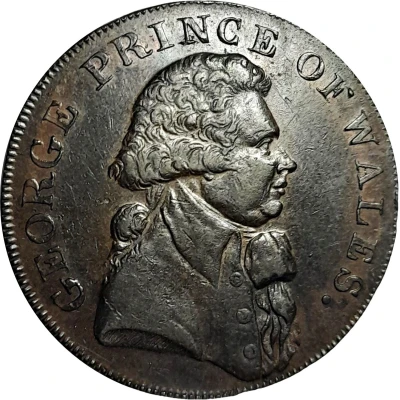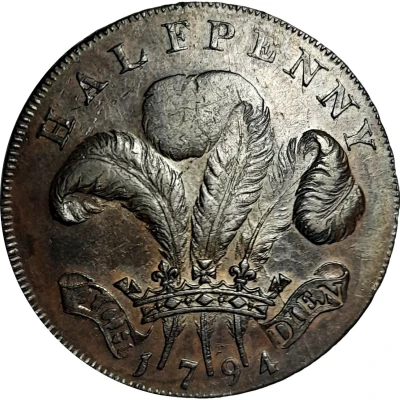


½ Penny Oxfordshire - Banbury / W. Rusher ND
1794 year| Copper | 9.94 g | 29.5 mm |
| Issuer | United Kingdom (United Kingdom, British Overseas Territories and Crown Dependencies) |
|---|---|
| King | George III (1760-1820) |
| Type | Token |
| Year | 1794 |
| Value | ½ Penny (1⁄480) |
| Currency | Conder tokens (1787-1797) |
| Composition | Copper |
| Weight | 9.94 g |
| Diameter | 29.5 mm |
| Thickness | 2.0 mm |
| Shape | Round |
| Technique | Milled |
| Orientation | Coin alignment ↑↓ |
| Demonetized | Yes |
| Updated | 2024-10-08 |
| Numista | N#308732 |
|---|---|
| Rarity index | 93% |
Reverse
Borough’s emblem of the sun with rays and a face in its centre enclosed in a circle, legend around.
Script: Latin
Lettering: DEUS · EST · NOBIS · SOL · ET · SCUTUM ·
Translation: God is to us both sun and shield
Edge
Plain with incuse lettering
Note: plain variety exists
Lettering: PAYABLE AT BANBURY OXFORD OR READING
Comment
Although this token is undated, it is likely to have been struck in 1794, the year William Rusher set up his shop in the market place in Banbury. A contemporary advertisement in Jackson's Oxford Journal, for 13 November 1794, offers quite a revealing glimpse of the scope of William’s business at that particular moment: “All kinds of Books and Stationery, Mens and Boys Hats, Gold Rings, Silver Goods, Plated Buckles, Looking Glasses etc. etc. now selling cheap at William Rusher’s (the late Mr White’s shop) in the Market Place, Banbury.”
https://www.felicitas-perpetua.com/medieval-coins/william-rusher-banbury-18th-century-halfpenny-token
Interesting fact
One interesting fact about the Token ½ Penny (Oxfordshire - Banbury / W. Rusher) ND (1794) coin is that it was issued during a time of severe coinage shortages in the United Kingdom, particularly in rural areas. To address this issue, many merchants and traders issued their own tokens, like this one, which were accepted as currency by the local community. This coin is a rare example of a token that was issued by a private individual, W. Rusher, in Banbury, Oxfordshire, and it is a testament to the resourcefulness and resilience of the people during that time.



